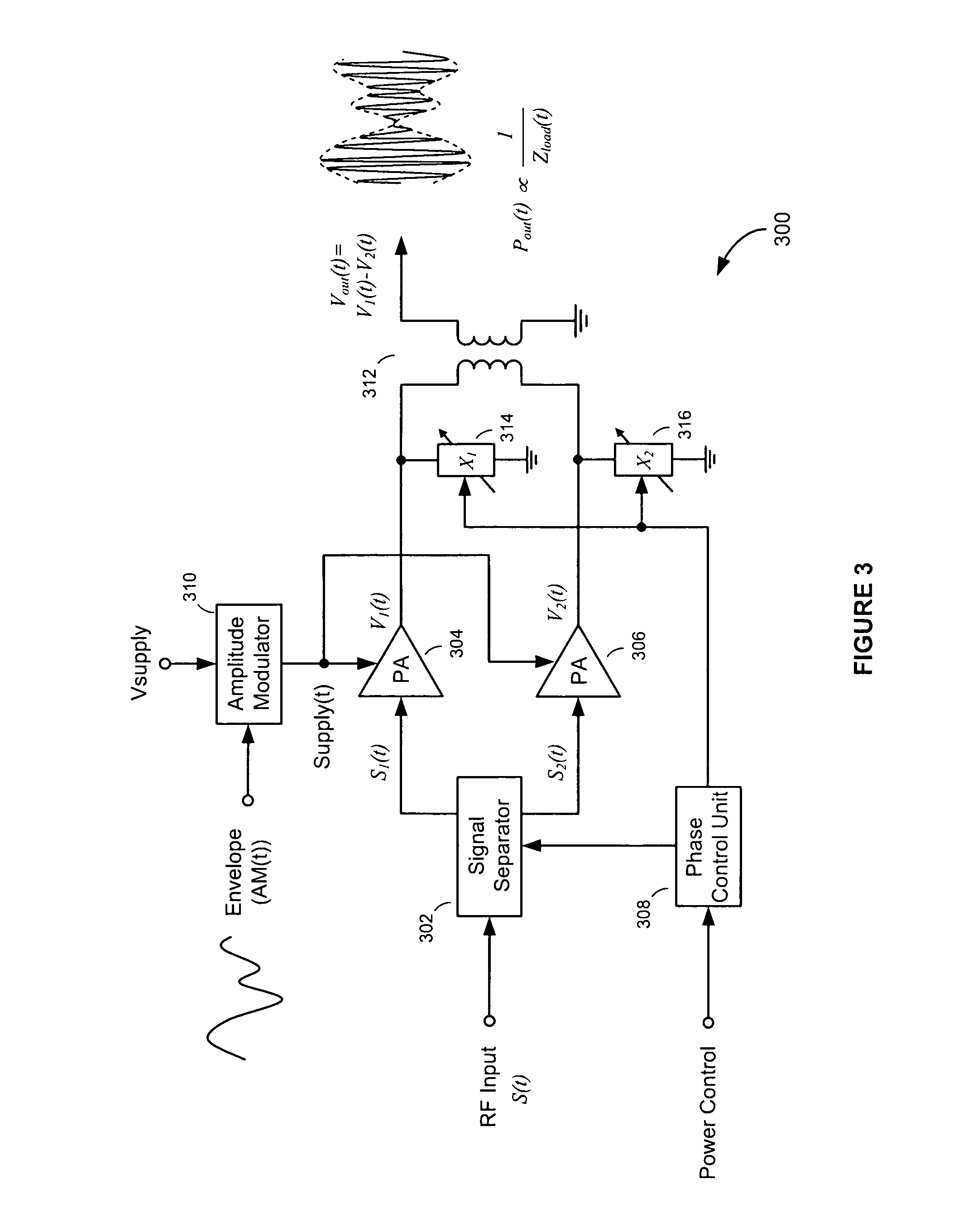Adaptive impedance converter adaptively controls load impedance
a technology of adaptive impedance converter and load impedance, applied in the field of communication transmitters, can solve the problems of limited utility, substantial reduction in efficiency, and effective approach, and achieve the effect of reducing the effective load impedance zout, and reducing the effective load impedan
- Summary
- Abstract
- Description
- Claims
- Application Information
AI Technical Summary
Benefits of technology
Problems solved by technology
Method used
Image
Examples
Embodiment Construction
[0027]Referring to FIG. 3, there is shown a transmitter 300, according to an embodiment of the present invention. The transmitter 300 comprises a signal separator 302, first and second power amplifiers (PAs) 304 and 306, a phase control unit 308, an amplitude modulator 310, a transformer 312, and first and second variable shunt reactances 314 and 316.
[0028]The signal separator 302 is configured to receive a radio frequency (RF) input signal S(t) and generate therefrom first and second constant-envelope RF component signals S1(t) and S2(t) having opposite (i.e., first and second) phase angles +φ(t) and −φ(t) relative to the phase of the RF input signal S(t). The vector sum of the first and second constant-envelope RF component signals S1(t) and S2(t) relates to the RF input signal S(t) as shown in the phasor diagram in FIG. 4. In the description of the exemplary embodiment that follows, it is assumed that the RF input signal S(t) is a phase-modulated RF signal having phase modulation...
PUM
 Login to View More
Login to View More Abstract
Description
Claims
Application Information
 Login to View More
Login to View More - R&D
- Intellectual Property
- Life Sciences
- Materials
- Tech Scout
- Unparalleled Data Quality
- Higher Quality Content
- 60% Fewer Hallucinations
Browse by: Latest US Patents, China's latest patents, Technical Efficacy Thesaurus, Application Domain, Technology Topic, Popular Technical Reports.
© 2025 PatSnap. All rights reserved.Legal|Privacy policy|Modern Slavery Act Transparency Statement|Sitemap|About US| Contact US: help@patsnap.com



